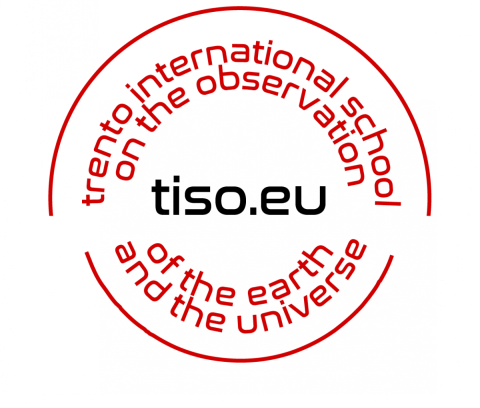
The exploration of Solar System's innermost planet: Mercury from Mariner 10 to BepiColombo

Abstract:
Mercury is a planet of extremes. It’s the smallest planet, but it has the highest density. Its Iron core is proportionally larger than those of Venus, Mars or the Moon. Being the closest planet to the Sun its surface temperature can reach values in excess of 700K and yet there is evidence of ice in constantly shadowed polar craters. Mercury is on the most eccentric orbit and is the only planet trapped in a 3:2 spin-orbit resonance with the Sun. Yet, despite its relevance for the understanding of the formation and evolution of our solar system, until today Mercury had been visited by only two NASA missions: Mariner 10 in the mid-70’s and MESSENGER about 15 years ago.
Mariner 10 during its three fly-byes obtained a limited coverage of the planet, as it observed only about half of it with variable spatial resolution (on average 1km and few images with 200m), but was able to retrieve important information on Mercury’s interior confirming its anomalously high bulk density and implied large fractional core size, and discovering its internal magnetic field. Moreover, Mariner 10 documented presence of H and He in the planet’s tenuous exosphere, made the first in-situ exploration of Mercury’s magnetosphere and solar wind environment.
MESSENGER, on the contrary, has been able to determine abundant stratigraphic, colour, and crater density evidence for widespread volcanism and intrusive magmatism; the old view of a surface covered uniquely by a primary crust was totally changed as the widespread resurfacing pointed to an extensive secondary crust. Messenger observations identified presence of pyroclastic deposits formed by explosive eruptions; sometimes these deposits are associated to very bright terrains, “hollows”, located also in areas where no pyroclastic deposits are observed. Most likely formation mechanisms for the hollows involve recent loss of volatiles through pyroclastic volcanism but also through combination of sublimation, weathering, outgassing. X-ray fluorescence spectra discovered marked differences in the elemental composition of Mercury respect to the other terrestrial planets. Relatively high Mg/Si and low Al/Si and Ca/Si ratios rule out a lunarlike feldspar-rich crust. Sulphur abundance is at least 10 times higher than that of the silicate portion of Earth or the Moon. If these new data are coupled with the low surface Fe abundance, the view that Mercury formed from highly reduced precursor materials (enstatite chondrite or anhydrous cometary dust particles) is supported, reducing the role of Fe and Ti opaque oxides. Nonetheless, the need of a darkening agent that justify the very low reflectance of the surface can be compatible with recent analysis pointing to a carbon-rich primary crust. The role of graphite is also important for the understanding of the contraction history of Mercury.
Indeed, lobate scarps, the surface manifestation of thrust faults, are more frequent and have a much greater aerial extent and length compared to the thrust faults observed on the Moon. It has been hypothesized that presence of graphite would have facilitated the generation of these structures on Mercury. Range of elevations on Mercury is considerably smaller than those of Mars or the Moon. The collective behaviour of the topographic features (lowlands in the northern hemisphere and topographic variations within Caloris basin), points to longwavelength
changes to Mercury’s topography occurred after the earliest phases of the planet’s geological history. Radar observations from the Earth coupled to images and laser altimetry pointed to the potential presence of Ice (mixed with dust) in the polar craters never illuminated by the Sun, the so called Permanently Shadowed Regions (PSR). A model for Mercury’s radial density distribution, consistent with the moment of inertia of the planet and of the solid outer shell, includes a solid silicate crust and mantle overlying a solid ironsulfide layer and an iron-rich liquid outer core and perhaps a solid inner core.
MESSENGER although a very successful mission left many questions unanswered. The goal of BepiColombo will be to provide answer and deepening out understanding of the planet Mercury. The ESA’s cornerstone mission BepiColombo will start its scientific operations in the Spring of 2027 having been launched in October 2018. BepiColombo is an interdisciplinary mission carried out jointly between the European Space Agency and the Japanese Aerospace Exploration Agency (JAXA). From dedicated orbits two spacecrafts, a planetary orbiter (MPO) and a magnetospheric Orbiter (MMO), will be studying the planet and its environment. The two orbiters will complement and improve on the measurements of MESSENGER especially in the areas of surface mineralogical (extending into the thermal emission spectral range) and elemental composition, image resolution and coverage, study of the interior structure, of the magnetosphere and test of Einstein’s theory of general relativity.
The presentation will give an overview of the present knowledge of the planet surface and interior on the basis of space missions and ground observations and will provide an up to date information on the BepiColombo operative plans which are being assembled in these very years.
Online attendance:
ID riunione: 864 4144 0064
Passcode: 268709
Link di invito https://unitn.zoom.us/j/86441440064?pwd=WQPfpcvhBv66xbWNcjxeEbSNLZKOid.1
